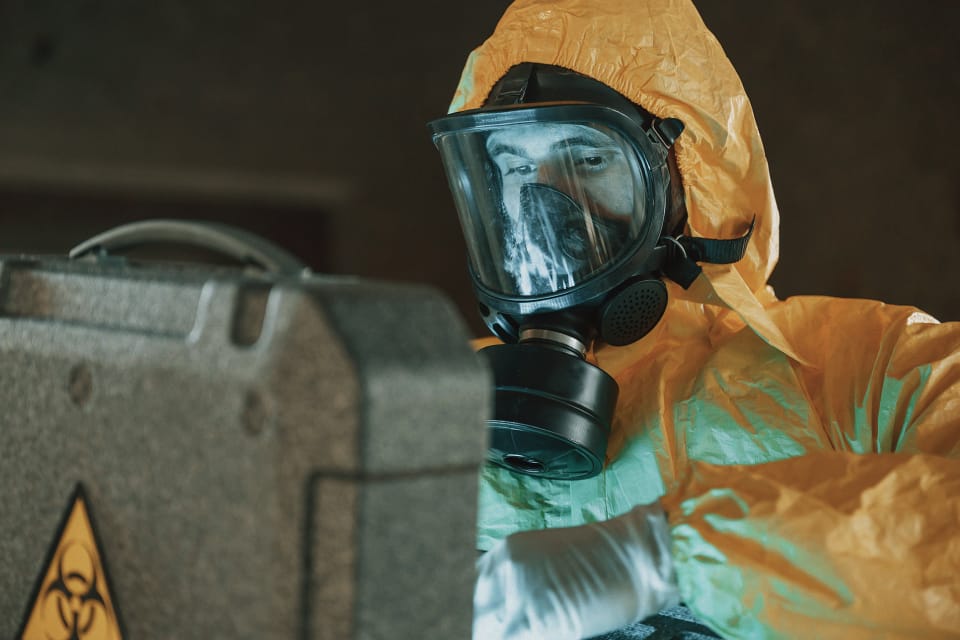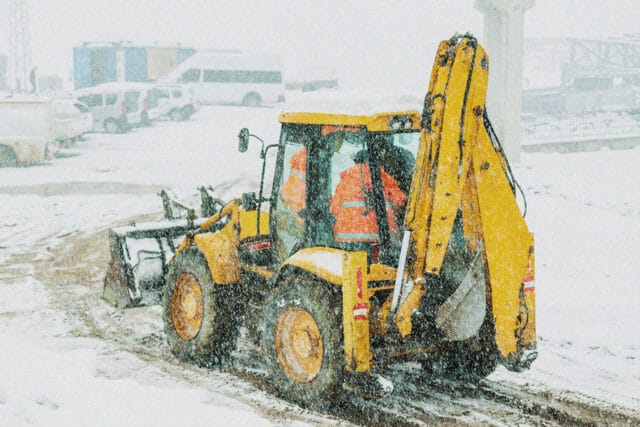
How to Choose the Best Hazmat Suit for Your Workers

Jobs in high-hazard industries have risks for workers. Providing the right protection can keep them safe on the job site. However, doing so effectively means knowing the right hazmat suit and protection level for each job function.
This article defines and explains the purpose of a hazmat suit and discusses the industries that use it. It also explores the different grade levels of protection to help you choose the best hazmat suits for your workers.
What is a Hazmat Suit?
The term “hazmat” is a combination of “hazardous” (haz) and “materials” (mat). A hazmat suit is personal protective equipment (PPE) that shields workers from dangerous substances and environments. It includes a full-body outfit and specialized gear to prevent any harmful materials from getting through.
Industries That Use a Hazmat Suit
Hazardous materials exist on many job sites, meaning workers from various industries require some form of hazmat suit. The following industries commonly require this type of PPE:
Oil and Gas
The oil and gas industry requires hazmat suits because of the potential contact with dangerous substances, such as these:
- Toxic gases
- Corrosive chemicals
- Radioactive substances
- Flammable materials
Construction
In construction, people sometimes need to wear hazmat suits, even if they’re not directly involved in the task at hand. People often use them to safely handle dangerous materials when renovating or demolishing old buildings that contain toxic substances.
Those materials include the following:
- Radon
- Asbestos
- Mold
- Lead-based paint
- Silica dust
Utilities
The utilities industry, which includes water, gas, and electricity, typically requires hazmat suits during repair, maintenance, and emergency response activities. This industry often involves working in confined spaces in conjunction with:
- Managing hazardous waste
- Performing decontamination operations
- Working near biological hazards
- Repairing gas leaks
Pharmaceutical
Hazmat suits are crucial in pharmaceuticals because of high quality and safety standards in manufacturing. Companies must ensure workers wear the PPE necessary to handle substances that might be highly toxic.
Mining
The mining industry uses hazmat suits to protect its workforce when unearthing ores and minerals, sometimes in hazardous environments. This practice often exposes miners to an array of dangers, including the following:
- Harmful chemicals
- Toxic gases
- Dust
- Radiation (when mining for uranium or other rare earth elements)
Chemical
The chemical industry uses hazmat suits to keep workers safe and protect the environment from harmful and corrosive chemicals. Hazmat suits protect workers from exposure to these dangerous substances during various tasks, including the following:
- Fumigation
- Chemical tank cleaning
- Maintenance procedures
- Chemical transportation
- Emergency response
Hazmat Suit Protection Levels
Global hazmat suit protection levels are similar but differ slightly in the number of groups and gradation. Examples from the United States and Europe are as follows:
United States
- Level A hazmat suits provide maximum protection from gases, liquid splashes, and mist. Level A suits include garments, a full-face mask with gloves, a breathing apparatus, and special footwear.
- Level B hazmat suits offer protection from hazardous chemical splashes, excluding vapors. Level B protection includes garments, gloves, special footwear, and a full-face mask with breathing apparatus.
- Level C hazmat suits guard against harmful chemicals and includes garments, gloves, boots, and respirator. This level is not suitable for an oxygen-lacking atmosphere or a chemical emergency. It only protects against specific hazardous materials.
- Level D hazmat suits include coveralls and chemical-resistant footwear. Workers wearing this gear do not encounter This design is unsuitable for a chemical emergency.
Europe
- Type 1: “Gas-tight” protection from gaseous and liquid chemicals.
- Type 2: Non-gas tight” protection from gaseous and liquid chemicals.
- Type 3: “Liquid jet tight” protection from liquid chemicals for a finite period.
- Type 4: “Liquid saturation tight” protection from liquid chemical spray for a finite period.
- Type 5: Protection from airborne dry particles for a finite period.
- Type 6: Protection from a “light spray” of various chemicals.
Complete Protection Requires the Right PPE and the Best Safety Solutions
The hazmat suit is crucial for workers in hazardous industries. Each environment in these industries carries risks and requires different levels of safety. Understanding the purpose and levels of hazmat suits is important for keeping your workers safe.
However, providing teams with the proper chemical protective clothing is only a partial solution. To keep your workers safe, use a risk management tool to identify and prevent accidents. This way, you can rely less on protective clothing and gear. Consider working with us to configure a tailored solution for your safety needs.
Contact us today to learn more.




